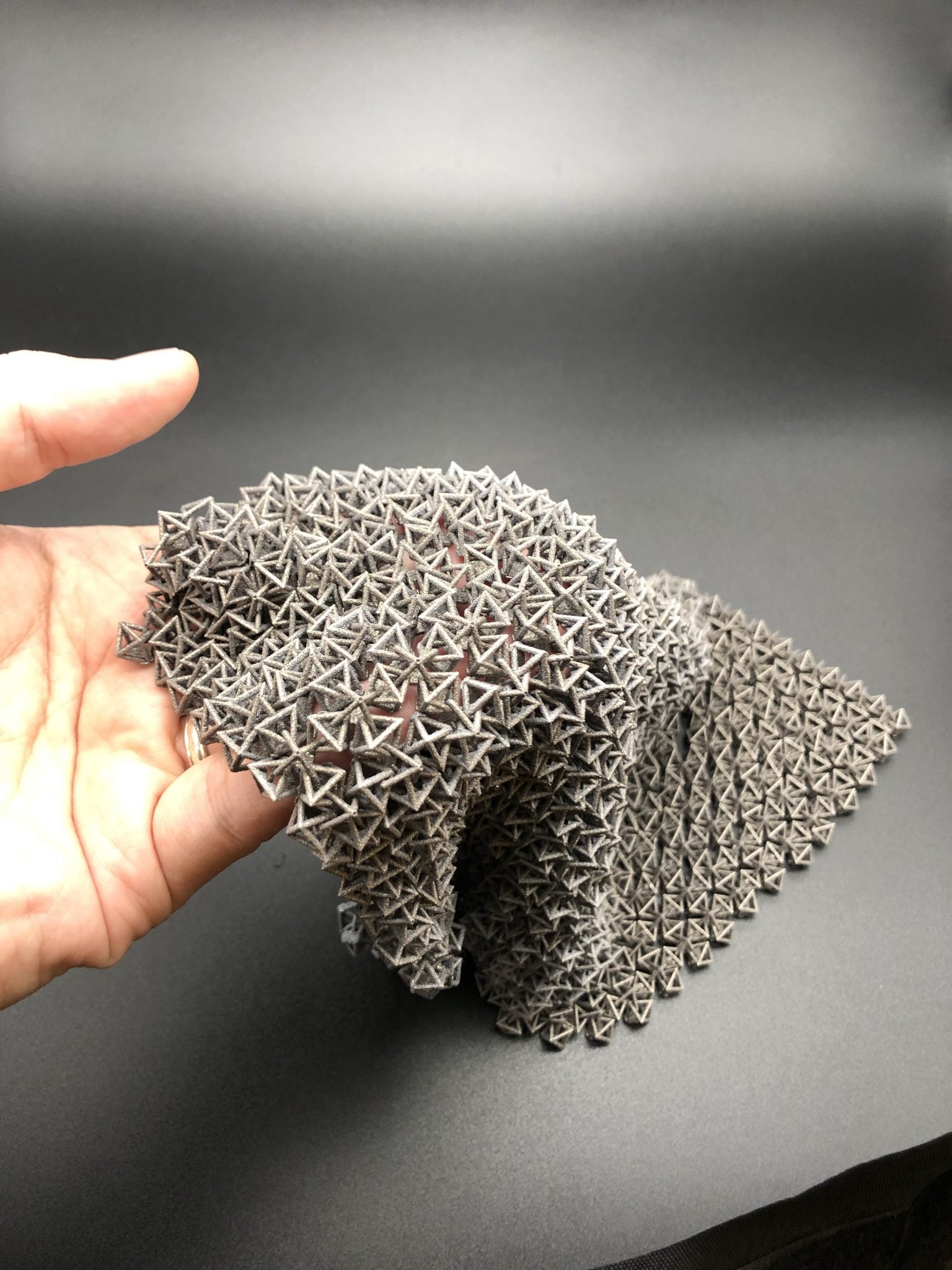Interesting concept and potentially weight savings for armored jackets too. If it works, and is lighter, it could mean far more comfortable protective clothing. Comfort means more people will likely use it, and that saves lives.
I will be very interested in this when it comes to market.

 advrider.com
advrider.com

Living in the future is awesome, friends. Because Moore’s Law, things that were practically impossible just a few years ago, exist in an experimental state now. In the foreseeable future, we’ll be using them in our daily lives.
Take, for instance, this 3D printed “fabric” that some super smart scientists at CalTech and NTU Singapore have come up with. It’s currently a bit clunky, but you can clearly and immediately see the application from a rider’s point of view.
This fabric mimics the behavior of a non-Newtonian fluid at a macro level. If you have D3O armor in your riding gear, you are currently using this same technology. You’ve toyed with a slurry made out of cornstarch and water, right? That is a prime example. Its molecular structure is such that force changes its shear properties. Slow movement does not change its viscosity but fast movement does.
The new armor fabric comprises pieces that interlock under stress and imitate the behavior of that fluid. The orange D3O armor that’s in your high-end jacket does the same thing. It’s squishy when you’re moving normally but hardens significantly on impact, reacting with the protection of a much stiffer material.
The cool thing about this “structured fabric” is that it is tunable. That is, it can become slightly stiff or very stiff, depending on inputs. It can be encased in a sheath, or perhaps magnetized, to force the pieces to interlock. From here, they’ll make fabric with smaller and smaller interlocking pieces, perhaps in layers. Some enterprising manufacturer is going to come along and create motorcycle gear out of a fabric that is perfectly soft and pliable until it’s impacted. Eventually a soft fabric will be as protective as those chunks of CE foam in your jacket elbows.
If this is the sort of thing that turns you on, you can read the study here: Structured fabrics with tunable mechanical properties.
I will be very interested in this when it comes to market.

Coming Soon: Fabric That Is Its Own Armor - Adventure Rider
It's the future, and on a warm day you're riding along wearing a soft sweatshirt made out of fabric that becomes a suit of armor on impact.
Fabric That Is Its Own Armor
A peek into the future of motorcycle gear

Living in the future is awesome, friends. Because Moore’s Law, things that were practically impossible just a few years ago, exist in an experimental state now. In the foreseeable future, we’ll be using them in our daily lives.
Take, for instance, this 3D printed “fabric” that some super smart scientists at CalTech and NTU Singapore have come up with. It’s currently a bit clunky, but you can clearly and immediately see the application from a rider’s point of view.
This fabric mimics the behavior of a non-Newtonian fluid at a macro level. If you have D3O armor in your riding gear, you are currently using this same technology. You’ve toyed with a slurry made out of cornstarch and water, right? That is a prime example. Its molecular structure is such that force changes its shear properties. Slow movement does not change its viscosity but fast movement does.
The new armor fabric comprises pieces that interlock under stress and imitate the behavior of that fluid. The orange D3O armor that’s in your high-end jacket does the same thing. It’s squishy when you’re moving normally but hardens significantly on impact, reacting with the protection of a much stiffer material.
The cool thing about this “structured fabric” is that it is tunable. That is, it can become slightly stiff or very stiff, depending on inputs. It can be encased in a sheath, or perhaps magnetized, to force the pieces to interlock. From here, they’ll make fabric with smaller and smaller interlocking pieces, perhaps in layers. Some enterprising manufacturer is going to come along and create motorcycle gear out of a fabric that is perfectly soft and pliable until it’s impacted. Eventually a soft fabric will be as protective as those chunks of CE foam in your jacket elbows.
If this is the sort of thing that turns you on, you can read the study here: Structured fabrics with tunable mechanical properties.
